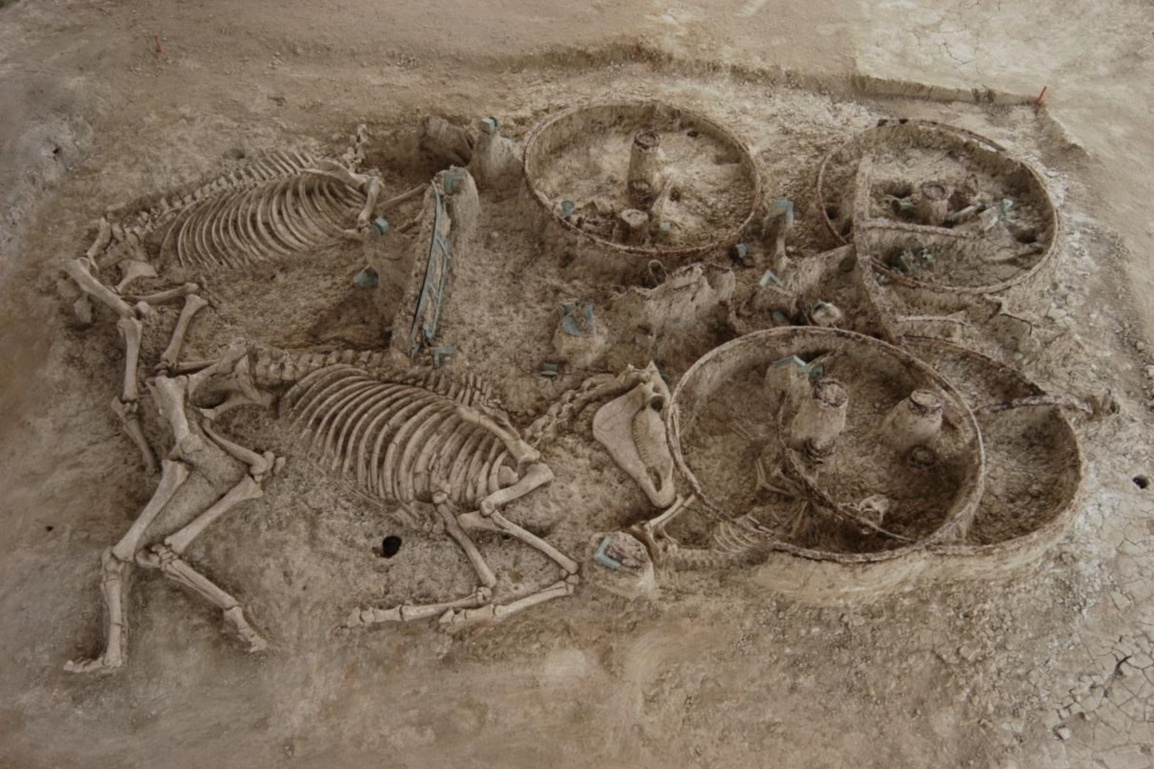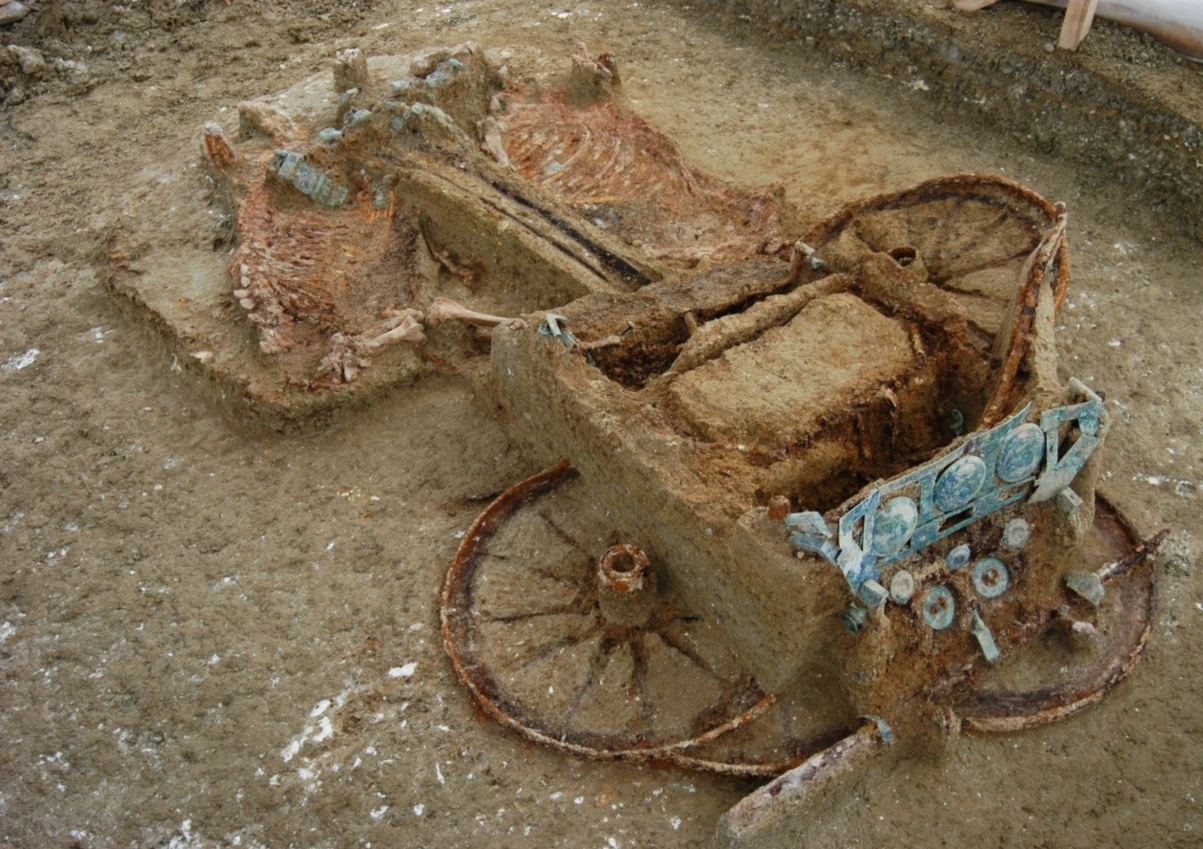The goal is a visitable archaeological site, an attractive cultural pole and at the same time an important development resource for Evros and Thrace
The studies and works to create a museum shell for the protection and highlighting of the unique archaeological finds in the burial mound of Mikri Doxipara-Zoni in Evros are progressing rapidly, in order to create an archaeological site that can be visited, an attractive cultural pole and at the same time an important development resource for Evros and Thrace, notes the announcement of the Ministry of Foreign Affairs.
The burial mound of Mikri Doxipara-Zoni is one of the largest mounds of imperial times, in the area of Thrace and the only one in the Greek area, in which wheeled vehicles were found preserved in such good condition. Excavation of the mound began in 2002 and lasted two years. The excavation uncovered four pits containing the cremated remains of three men and one woman accompanied by numerous bronze, iron, glass and clay offerings, five chariots with their underweights, as well as two burials of five additional horses. In all the carriages, the functional and decorative metal elements are preserved, while in two of them, imprints of their wooden parts are also preserved. Archaeological data date the whole between 100 and 150 AD.
“Twenty years ago, the archaeological dig of Diamantis Triantafyllos revealed a unique find for Greek data, the mound of the Little Zone of Doxipara, where the cremations of the dead coexist with the burials of horses and chariots. In addition to presuming the value of the chariots, as an asset of the families of Thrace, the size of the mound and the number of gifts demonstrate not only the display of wealth but also the effort to ensure a formed social identity”, said the Minister of Culture, Lina Mendoni. And he added:
“From 2020 onwards, after a series of years of setbacks and delays, we have, overall, promoted the conservation and restoration projects of the finds, but also the projects of restoring the geometry of the mound, protecting and highlighting the burial monuments. At the same time, the museological study was drawn up and approved and the museographic studies are proceeding. The findings of the mound constitute an archaeological ensemble, particularly of great archaeological and historical value, which is preserved in an excellent state of preservation. To protect the mound, we are creating a museum shell within which the visitor will receive the image at the moment of completion of the excavation research. The visitor will see the burials of horses and carriages in their place, while all the gifts and other movable finds will be displayed in the showcases. With the completion of the works, a very important archaeological site at the end of our homeland, in northern Evros, will emerge, and at the same time, an important development resource will be created for the wider area, capable of claiming a high level of traffic.”
Exhibition highlight
As far as the display of the space is concerned – informs the announcement of the Ministry of Foreign Affairs – the basic option is to exhibit all the vehicles, carriages and horses as an indivisible unit. Great importance is placed on preserving the excavation image of the cremation pits, giving the visitor the opportunity to experientially understand important aspects of the burial ritual of the mound. The bones of the fifteen horses are preserved on the ground, while the preserved offerings of the cremations are presented grouped in display cases. The carriages are rebuilt with the original parts placed in their exact position.
The course of the exhibition corresponds to viewing the findings in chronological order and is circular. The exhibition narrative and by extension the movement of visitors within the exhibition space follows the dating of the cremation burials and the consequent gradual construction of the mound. By constructing a route with 18 independent stops, the visitor understands and experiences the character and structure of the burial complex, but also the parts of the burial process followed during the construction stages of the mound from the beginning of the 2nd century AD, when the cremated first dead, until the middle of the 2nd century AD, when the last cremation took place, a woman.
Mobile findings
It is noted that the movable findings of the excavation include numerous offerings, metal parts of the carriages, decorative elements from the horses’ harness, but also organic materials. Among the gifts are 19 intact copper vessels, which make up the largest set of copper vessels that has been identified in Greece. Finally, two bronze medical tool cases of surgical instruments are internationally the best preserved tool cases of imperial times.
Source :Skai
I am Frederick Tuttle, who works in 247 News Agency as an author and mostly cover entertainment news. I have worked in this industry for 10 years and have gained a lot of experience. I am a very hard worker and always strive to get the best out of my work. I am also very passionate about my work and always try to keep up with the latest news and trends.













